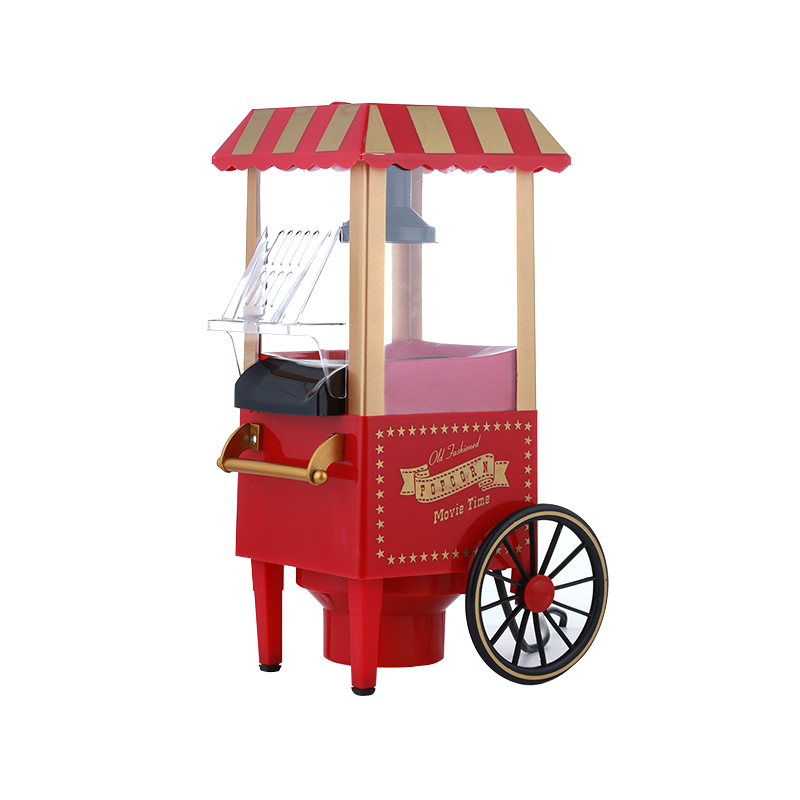With the diversification of modern family lifestyles, parents are beginning to prioritize interaction and communication with their children. Especially in today's digital, fast-paced world, many families are seeking new ways to enhance parent-child communication and emotional bonding. The kids cotton candy machine, as a fun and creative family entertainment tool, is gradually becoming a part of daily family life. It not only provides children with a sweet treat but also serves as an important bridge for strengthening communication and emotional connection between parents and children.
In modern families, more and more parents are discovering that participating in the cotton candy-making process can significantly strengthen their emotional connection with their children. Working together with their children to create the perfect cotton candy machine, from powdered sugar to delicious marshmallows, is not only a fun parent-child activity but also a time for deep emotional connection.
Enhancing Communication Through Joint Participation
Family interaction isn't limited to verbal communication. Often, parent-child communication relies on completing a task together. The kids cotton candy machine provides just that opportunity. During the cotton candy-making process, parents and children need to work together to operate the machine, adjusting the amount of powdered sugar, and controlling the speed. This process is full of interaction and communication.
Through this collaborative effort, children not only learn how to operate the machine and make delicious cotton candy, but also, with their parents' help, learn problem-solving skills. For example, a child might ask, "Why does sugar turn into cotton candy?" Parents can take this opportunity to explain the physical principles behind this, enriching their children's knowledge and deepening the parent-child interaction. Children may encounter minor difficulties while operating the machine and require help or guidance from their parents. This collaborative effort not only enhances communication but also allows children to gradually build confidence with their parents' support.
During this process, parent-child interaction goes beyond verbal instruction and guidance to include collaborative, hands-on companionship. This deep parent-child collaboration greatly fosters mutual understanding and trust, strengthening the emotional bond within the family.
A Natural Extension of Emotional Communication
The use of the kids cotton candy machine is often filled with warmth and joy. As children make marshmallows, parents, acting as guides and partners, naturally extend their emotional connection with their children. The joy, curiosity, and questions expressed by children during the process are carefully acknowledged and responded to by their parents. These seemingly simple interactions can often unknowingly strengthen the parent-child relationship.
For example, when making marshmallows, children often encounter minor challenges with the amount of powdered sugar or how to operate the machine. In these situations, parents, through patient explanations, encouragement, and assistance, can help children feel their care and support. Children not only experience a sense of reliance on their parents when they encounter difficulties, but also a sense of security that their parents are their solid support during these challenges. This emotional support is not just expressed in words; more importantly, it is conveyed through practical participation and care.
As parents and children work together to make marshmallows, the relationship between them transcends a simple superior-subordinate relationship to one of equals and interaction. Children experience care rather than blame in these interactions, which deepens the emotional connection between parents and children.
Deepen bonds by creating shared memories
Building parent-child relationships requires the accumulation of shared memories, and the Kids Cotton Candy Machine provides a rich source of shared memories. By making cotton candy together, parents and children can unknowingly create their own family stories. Each experience of making cotton candy can become a part of a child's future memories and a cherished memory as they grow.
For example, at annual family gatherings or birthday parties, parents and children use the cotton candy machine to make delicious cotton candy together. This activity gradually becomes a unique family celebration and a memory. Children will remember past winter evenings when the family gathered together, holding freshly made cotton candy in their hands, laughter and warmth filling the room. These emotional bonds grow stronger over time, further strengthening the parent-child relationship.
Furthermore, by experiencing the process of making cotton candy together, parents and children can share little secrets, feelings, and emotions. The process itself is relaxing and enjoyable, reducing the pressure or distance that can arise in formal conversations. Therefore, such interactions often become an informal form of communication between parents and children, making emotional exchange more natural and smooth.
Improving Children's Emotional Expression and Understanding
The kids' cotton candy machine not only promotes emotional communication between parents and children but also helps children better develop their emotional expression. During the cotton candy-making process, children often express a variety of emotions, including excitement, curiosity, anticipation, and even disappointment. Parents need to patiently listen and understand their children's emotions. When children feel confused or dissatisfied, parents can provide appropriate emotional guidance and comfort, not only helping them overcome their immediate emotional fluctuations but also helping them learn how to properly express and manage their emotions.
This emotional education process is the first step in a child's socialization. By completing tasks with their parents, children gradually learn how to understand the emotional needs of others, express their own emotions in interactions, and manage relationships through collaboration. This not only strengthens the emotional bond between parents and children but also lays the foundation for children's future social activities and emotional expression.
















